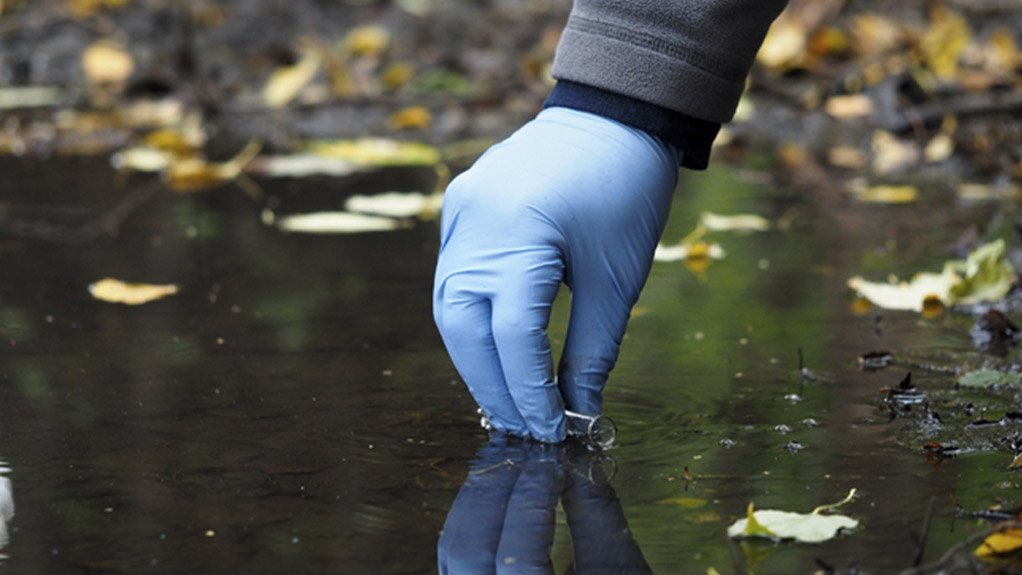Groundwater Quality Management in South Africa
This article has been supplied as a media statement and is not written by Creamer Media. It may be available only for a limited time on this website.
(Virtual Showroom): South Africa has taken a pro-active approach towards designing management strategies when it comes to groundwater. This is a step in the right direction as various areas in our country can only rely on groundwater sources for their daily provision. A series of strategies and policies was published by the Department of Water Affairs and Forestry (DWAF) in 2000 onwards, one of these being the Policy and Strategy for Groundwater Quality Management in South Africa.
Firstly, why did DWAF publish this strategy? The importance of groundwater was established as groundwater is seen as one of the most cost-effective sources of water supply to and in rural areas. With the current increases experienced in levels of urbanisation, developments, agriculture, mining and population growth, South Africa is facing a severe threat to the quality and sustainability of the natural groundwater resources. Groundwater contamination has become an increasing social and environmental issue and a policy / strategy had to be put in place to mitigate and manage these resources.
The National Water Act (Act 36 of 1998) (NWA) provides the framework within which the Department can define different water uses of which the following uses require formal licensing or rights to use and includes among other the taking of water taking water from a water resource and the removal of underground water as associated with groundwater resources as also setting out the basis for the implementation of the strategy. As such the Groundwater Quality Management strategy was developed for implementation by DWAF specifically where these types of water uses can apply.
For the strategy to work effectively, an aim was set to minimize contamination of the water resources and to ensure sustainable development use can be achieved for these water resources. Source-directed pollution prevention is a core aim and is in turn enabled through the NWA in a number of ways of which regulated licensing is the most direct and powerful. Regulated licencing is therefore specifically used to manage groundwater resources for specific areas and specific uses.
For a specific water use to be allowed, the Department (now called the Department of Water and Sanitation (DWS)) had regulations put into place directing water use licencing and specific requirements associated with this process in the Regulations Regarding the Procedural Requirements for Water Use Licence Applications and Appeals (GNR 267 of 2017). GNR 267 include requirements in terms of specialist technical reports and investigations in support of water use applications. Technical reports which can be require include a range of studies to assess and review the planned water use with Geohydrology a main focus.
Geohydrology specialist assessments need to follow the set guideline as per Annexure 5 of GNR 267 as detailed below. ENVASS specialist Geohydrology assessments follow the guideline as set out in order to achieve the desired outcomes as per the Strategy for Groundwater Quality Management and Water Use Licencing and can further assist with a range of specialised groundwater management services. A geohydrology specialist is a professional who specializes in the study of groundwater and the hydrological processes that govern the movement and distribution of water in the earth. In the context of Annexure 5 of GNR 267, a geohydrology specialist would be responsible for conducting assessments of potential impacts on groundwater resources. These assessments would need to follow the set guidelines outlined in Annexure 5 (Figure1), which would include procedures for identifying and evaluating potential risks to groundwater resources, as well as methods for monitoring and mitigating any negative impacts.
Comments
Press Office
Announcements
What's On
Subscribe to improve your user experience...
Option 1 (equivalent of R125 a month):
Receive a weekly copy of Creamer Media's Engineering News & Mining Weekly magazine
(print copy for those in South Africa and e-magazine for those outside of South Africa)
Receive daily email newsletters
Access to full search results
Access archive of magazine back copies
Access to Projects in Progress
Access to ONE Research Report of your choice in PDF format
Option 2 (equivalent of R375 a month):
All benefits from Option 1
PLUS
Access to Creamer Media's Research Channel Africa for ALL Research Reports, in PDF format, on various industrial and mining sectors
including Electricity; Water; Energy Transition; Hydrogen; Roads, Rail and Ports; Coal; Gold; Platinum; Battery Metals; etc.
Already a subscriber?
Forgotten your password?
Receive weekly copy of Creamer Media's Engineering News & Mining Weekly magazine (print copy for those in South Africa and e-magazine for those outside of South Africa)
➕
Recieve daily email newsletters
➕
Access to full search results
➕
Access archive of magazine back copies
➕
Access to Projects in Progress
➕
Access to ONE Research Report of your choice in PDF format
RESEARCH CHANNEL AFRICA
R4500 (equivalent of R375 a month)
SUBSCRIBEAll benefits from Option 1
➕
Access to Creamer Media's Research Channel Africa for ALL Research Reports on various industrial and mining sectors, in PDF format, including on:
Electricity
➕
Water
➕
Energy Transition
➕
Hydrogen
➕
Roads, Rail and Ports
➕
Coal
➕
Gold
➕
Platinum
➕
Battery Metals
➕
etc.
Receive all benefits from Option 1 or Option 2 delivered to numerous people at your company
➕
Multiple User names and Passwords for simultaneous log-ins
➕
Intranet integration access to all in your organisation



















